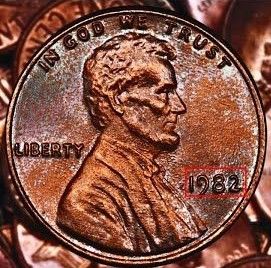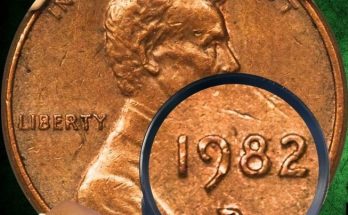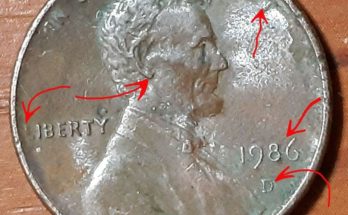The Coin That War Made Priceless
The year 1943 was a pivotal moment for the United States, not just on the global stage, but inside the Philadelphia, Denver, and San Francisco Mints. Due to the intense demand for copper to manufacture ammunition and wiring for the war effort, Congress mandated a dramatic, one-year change to the composition of the Lincoln Cent.
The Great Composition Switch
To save precious copper, the U.S. Mint began striking pennies using steel coated in a thin layer of zinc. This created the distinctive, silver-colored 1943 steel cent—a coin that looks completely different from any other penny made before or since.
The 1943 Bronze Penny is the stunning result of this rushed transition. It is the definitive transitional error coin in American numismatics, meaning a coin struck with the correct year’s die on a planchet (blank coin disk) from the previous year’s composition.
A Million-Dollar Accident
-
The Error: A few leftover bronze planchets (made of 95% copper) from the 1942 production run were inadvertently caught in the presses and struck with the new 1943 dies alongside the standard steel blanks.
-
The Rarity: The bronze planchets were supposed to be completely removed. As a result, only a tiny handful of these copper-colored 1943 pennies are known to exist—perhaps only about 20 coins across all three mints (Philadelphia, Denver, and San Francisco).
-
The Value: Because of its legendary status, extreme scarcity, and connection to a major historical event, this coin is a numismatic superstar. The finest known example, a 1943-S (San Francisco) Bronze Cent, sold for over $1 million in 2010, cementing its status as the most valuable error penny in the world. Other high-grade examples have consistently sold for hundreds of thousands of dollars.
🔎 How to Spot the Real Deal (And Avoid the Fakes)
The huge value of the 1943 Bronze Cent has made it a prime target for counterfeiters. Many copper-colored 1943 cents are actually fake, usually created by:
-
Altering a 1948 Penny: A common trick is grinding down the right side of the ‘8’ on a regular 1948 copper cent to make it look like a ‘3’.
-
Copper-Plating a Steel Cent: A genuine 1943 steel cent can be coated in copper to fool an unsuspecting buyer.
If you believe you have found a 1943 Bronze Cent, follow this crucial, easy test:
-
The Magnet Test: A genuine 1943 Bronze (Copper) Cent will NOT stick to a magnet. If your 1943 penny is brown/copper-colored and a magnet pulls it, it’s a standard, steel cent that has been copper-plated and is worth only a few cents. If it does not stick, you must immediately take it to a professional coin grader or numismatic expert for authentication, as you could be holding a fortune!
Other Million-Dollar Contenders
While the 1943 Bronze Cent holds the title for the most famous “million-dollar penny,” other rare cents have approached or exceeded that figure at auction:
-
The 1944 Steel Cent: This is the reverse error—a 1944 coin struck on a leftover 1943 steel planchet. An authenticated example from the Denver Mint (1944-D) sold for an incredible $1.7 million.
-
The 1969-S Doubled Die Obverse: Known for its dramatic doubling of the date and lettering, a high-grade example of this post-WWII error has sold for over $126,000, and its rarity suggests a future auction price could easily push it much higher.
The story of the 1943 Bronze Penny is a testament to how tiny errors can create monumental value. It proves that the most exciting treasures in numismatics are often the ones that should never have existed.
Want to learn about other valuable pennies still believed to be in circulation? You can find guides and videos on how to spot the elusive 1955 Doubled Die Cent or the incredibly rare 1982-D Small Date Copper Cent (which has sold for over $18,000 and has only a couple of confirmed examples).
Would you like me to provide a quick guide on the key difference between the Large Date and Small Date 1982 pennies?



